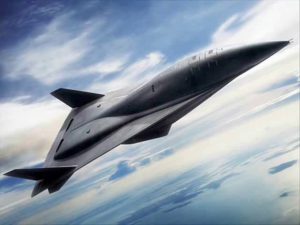Coating innovation set to help make London to New York in two hours a reality
We all want things faster but while many modes of technology and transport continue to advance, commercial air travel has remained relatively unchanged for decades. In fact, it could be argued that air travel has taken a step back since Concorde was retired in 2003.
That however is all set to change with the exciting advent of hypersonic speed travel. Five times faster than the speed of sound, hypersonic travel would make the 3,500 miles journey from London to New York possible in a mere 2 hours – 1 hour faster than Concorde.

Coating breakthrough helping make step change in air travel a reality
The core challenge with achieving hypersonic speeds for aircraft is the 2000°C to 3000°C heat which is generated by air and gas as aircraft hurtle through the atmosphere. Such intense heat wreaks havoc with structural integrity, removing surface layers from the metallic materials of the aircraft through the oxidation and ablation processes which take place.
Ultra-high temperature ceramics (UHTCs) are typically the answer to such metallurgical obstacles and are already in use for spacecraft, rockets and defence missiles. The current crop of UHTCs do not have the characteristics to withstand the environmental issues encountered by hypersonic speeds.
An Anglo-Chinese collaboration between researchers at the University of Manchester and Central South University (CSU), however have created a carbide-based ceramic coating that they claim is ‘vastly superior’ in resisting temperatures up to 3000°C, compared to existing UHTCs.
Testing has so far revealed the new coating to perform 12 times better than the conventional Zirconium carbide (ZrC) UHTC.
Researchers state that the unique structural characteristics and features manufactured at CSU’s Powder Metallurgy Institute are the drivers behind the improved performance.
Manufactured using a reactive melt infiltration process, the new coating is reinforced with carbon composite – increasing strength and enhancing resistance to surface degradation.
Researchers continue to test the coating but it is hoped that the new ceramic coating could help trigger a push for hypersonic aerospace developments – a leap forwards even when compared to the likes of Boom’s proposed supersonic passenger jet.
Register below for our monthly email and stay up-to-date with the latest surface engineering white papers, case studies and innovation news.

